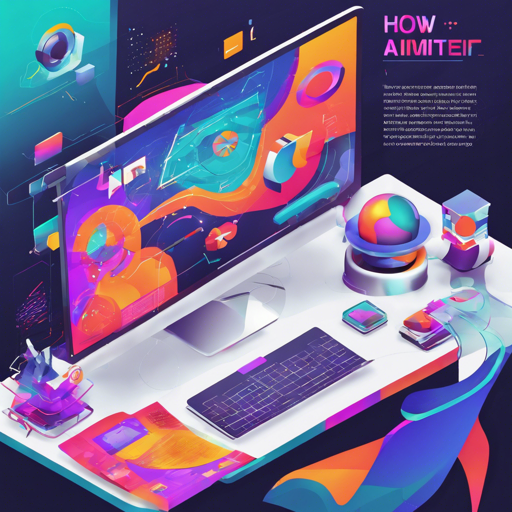In this blog post, we’ll explore the feature-rich world of AnimateDiff, a powerful tool for animating personalized text-to-image diffusion models without necessitating specific tuning. Whether you’re a seasoned developer or just starting, this step-by-step guide aims to make your experience as smooth as possible.
What is AnimateDiff?
AnimateDiff is an innovative implementation that allows users to animate images based on their specific preferences. The focus is on delivering high-quality animations that can be generated effortlessly using various techniques and pre-trained models.
Steps to Get Started with AnimateDiff
To dive into the world of AnimateDiff, follow these steps:
- Download Models: Start by downloading the LoRA models either by training them yourself via A1111 or downloading pre-existing models from Civitai.
- Set Up Your Environment: Ensure you have all the dependencies installed. You can set up using Conda by running:
conda activate animatediff - Run the Demo: Launch the Gradio demo for easier navigation by executing:
This will run a local server on localhost:7860.python app.py
Understanding the Code: An Analogy
Let’s liken the operation of AnimateDiff to a movie director working with a talented cast and crew. In our analogy:
- The **script** represents the input parameters you give: these are like the models and configurations that guide the animation process.
- Your **actors** are the images and models—each bringing their strengths and performing based on the direction given, which is akin to your code.
- The **set** is your computational setup—the hardware and environment you prepare to ensure the performance is top-notch.
- The **editing room** exemplifies the post-processing stage where you adjust and enhance the output, playing with aspects like resolution and frame count to achieve the best final cut!
Troubleshooting Common Issues
As you embark on your journey with AnimateDiff, you may encounter some hiccups along the way. Here are a few common issues and their potential solutions:
- Installation Issues: Ensure that you have xformer installed as it’s crucial for reducing inference memory.
- Memory Errors: If you run into VRAM limitations, consider lowering your frame count or resolution. Aim for 16 frames and a resolution of 512.
- Animation Quality: Stick to the recommended models and ensure you’re using the correct configurations. If the results aren’t satisfactory, revisit your settings and tweak them according to the available documentation.
- Compatibility Issues: If using extensions or third-party tools, make sure they are updated and compatible with your version of AnimateDiff.
For more insights, updates, or to collaborate on AI development projects, stay connected with fxis.ai.
Additional Tips for Creative Use
Creativity knows no bounds when using AnimateDiff. Here are some innovative ways to leverage the tool:
- Combine animations with other techniques like super-resolution and frame interpolation to enhance quality.
- Experiment with music generation to create a harmonious connection between visuals and sound.
- Get involved with the community and open-source contributions for new insights and collaborative projects.
At fxis.ai, we believe that such advancements are crucial for the future of AI, as they enable more comprehensive and effective solutions. Our team is continually exploring new methodologies to push the envelope in artificial intelligence, ensuring that our clients benefit from the latest technological innovations.
Conclusion
AnimateDiff empowers users to create customized animations effortlessly. By following this guide, you can harness its capabilities for your artistic endeavors or professional projects. Happy animating!

